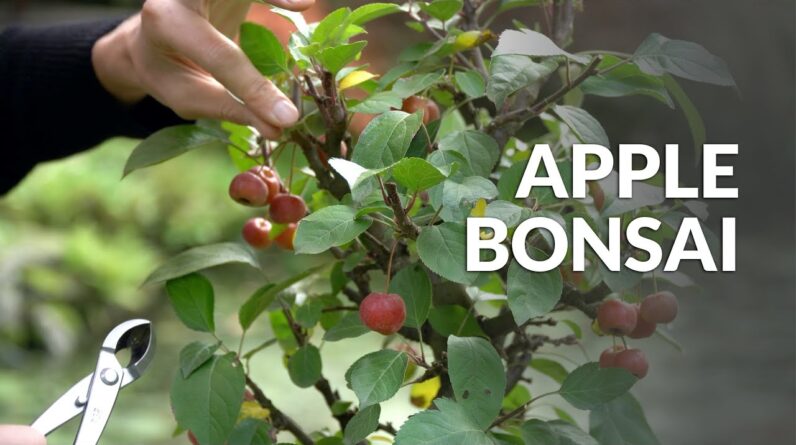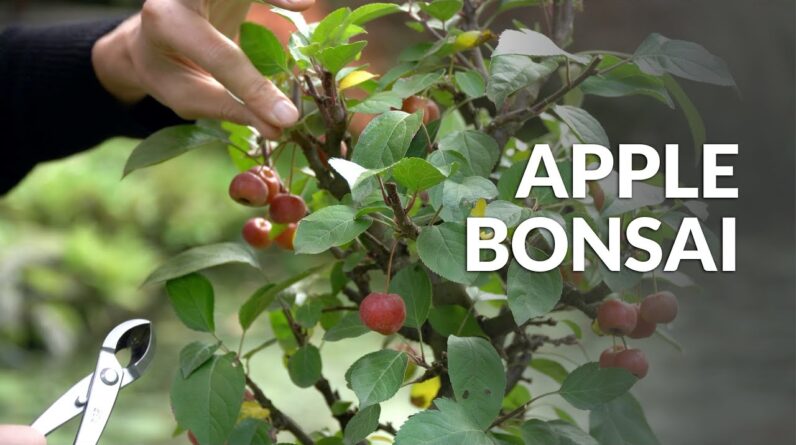Looking for a care guide for Aralia bonsai trees? Learn everything you need to know about growing and maintaining these beautiful trees in this comprehensive guide.
Are you interested in bonsai trees and looking for a unique addition to your garden or home?
The Aralia bonsai tree might be just what you're searching for. Originating in Japan during the Edo period, Aralia bonsai trees boast distinctive branching patterns and deep green foliage that can thrive in various climates.
These trees have gained popularity among bonsai enthusiasts due to their aesthetic appeal and ability to add a special touch to any space. However, growing and caring for an Aralia bonsai tree requires some specific techniques such as trimming, wiring, and repotting.
Additionally, regular watering, indirect light, fertilization, and pruning are essential for its maintenance. If you're considering this tree, make sure to select a fast-draining soil mix and be cautious if there are children or pets around, as some varieties of Aralia bonsai can be toxic.
While Aralia plants are typically not grown as houseplants, there are certain varieties that can thrive indoors. So, if you're wondering how long it takes to grow an Aralia bonsai from seed or how to care for your Aralia, keep reading to learn more about this fascinating plant.
Aralia Bonsai Tree Care Guide
Aralia bonsai trees are a beautiful addition to any home or garden. With their unique branching patterns and deep green foliage, these trees can add a touch of elegance and tranquility to your space. In this comprehensive guide, we will cover everything you need to know about caring for your Aralia bonsai, from how long it takes to grow to the proper techniques for pruning and repotting.
How Long Does it Take to Grow Aralia?
Growing an Aralia bonsai from seed can be a rewarding experience, but it requires patience. On average, it can take anywhere from one to three years for an Aralia bonsai to reach its full size. The exact time it takes will depend on factors such as the variety of Aralia bonsai and the growing conditions. However, with proper care and attention, you can enjoy watching your Aralia bonsai grow and thrive over time.

How to Plant and Grow Aralia
Planting and growing an Aralia bonsai is not as complicated as it may seem. To get started, you will need a small pot with good drainage and a fast-draining soil mix. A mix of potting soil, perlite, and akadama is recommended for Aralia bonsai.
To plant your Aralia bonsai, begin by placing a layer of soil at the bottom of the pot. Carefully remove the Aralia bonsai from its nursery container and gently loosen the root ball. Place the tree in the pot, making sure that the top of the root ball is level with the rim of the pot. Fill the remaining space in the pot with your soil mix, making sure to press it down firmly to remove any air pockets.
Once your Aralia bonsai is planted, it's important to provide it with proper care to ensure its growth and health.

How to Care for Your Aralia?
Proper care is crucial for the health and well-being of your Aralia bonsai. Here are some essential care tips to keep in mind:
Aralia Bonsai Watering Guide
Aralia bonsai trees require regular watering to thrive. However, it's important to strike a balance between overwatering and underwatering. The frequency of watering will depend on factors such as the size of your bonsai, the type of soil mix, and the climate in which it is grown.
As a general rule, it's best to check the moisture level of the soil by touching it with your finger. If the soil feels dry to the touch, it's time to water your Aralia bonsai. When watering, make sure to thoroughly saturate the soil until water drains out of the bottom of the pot. Avoid letting your bonsai sit in standing water, as this can lead to root rot.
Aralia Bonsai Light Requirements
Proper lighting is essential for the health of your Aralia bonsai. These trees prefer indirect light, as direct sunlight can scorch their leaves. Place your Aralia bonsai in a location where it will receive bright, filtered light throughout the day. A south-facing window, protected by sheer curtains or blinds, can be an ideal spot for your bonsai.
If you notice that your Aralia bonsai is not receiving enough light, you may need to supplement with artificial lighting. High-quality grow lights can provide the necessary light for your bonsai to thrive, especially during the winter months when natural light may be limited.
Aralia Bonsai Fertilization
Fertilizing your Aralia bonsai is important for promoting healthy growth and maintaining its overall health. The frequency of fertilization will depend on the type of fertilizer you use and the specific needs of your bonsai.
A balanced, water-soluble fertilizer can be used every two weeks during the growing season (spring and summer). Reduce the frequency of fertilization to once a month during the fall and winter months when growth slows down. Always follow the instructions on the fertilizer packaging and be careful not to over-fertilize, as this can harm your Aralia bonsai.
Aralia Bonsai Pruning
Pruning is an essential part of maintaining the shape and size of your Aralia bonsai. Regular pruning helps to stimulate growth, remove dead or diseased branches, and maintain a balanced appearance.
When pruning your Aralia bonsai, it's important to use a sharp, clean pair of bonsai shears. Remove any dead or dying branches, as well as any branches that are crossing or rubbing against each other. To maintain a specific shape or style, prune the branches to the desired length, taking care not to remove more than one-third of the tree's foliage at a time.
Aralia Bonsai Repotting
Repotting your Aralia bonsai is necessary to ensure its continued health and growth. Repotting should be done every two to three years or whenever the roots have outgrown the current pot.
When repotting, carefully remove the bonsai from its pot and gently loosen the root ball. Inspect the roots and prune any that are excessively long or tangled. Place a layer of fresh soil mix at the bottom of the pot and position the bonsai in the center. Fill the remaining space with the soil mix, making sure to press it down firmly.
Repotting is also an excellent opportunity to check the overall health of your bonsai and make any necessary adjustments to its care routine.

Toxic Varieties of Aralia Bonsai
While Aralia bonsai trees are generally safe, it's important to be aware that some varieties can be toxic. This is especially important if you have children or pets in your home. Varieties such as Aralia Fabian and Geranium Aralia can cause mild to moderate toxicity if ingested.
If you have toxic varieties of Aralia bonsai, it's important to take precautions. Keep the bonsai out of reach of children and pets, and make sure to wash your hands thoroughly after handling the tree. If you suspect that your child or pet has ingested any part of a toxic Aralia bonsai, seek immediate medical attention.

Growing Aralia Bonsai Indoors
While Aralia bonsai trees are primarily grown outdoors, there are some varieties that can thrive indoors. Varieties such as Japanese Aralia (Polyscias scutellaria) and Ming Aralia (Polyscias guilfoylei) can be kept as houseplants with proper care.
To grow an Aralia bonsai indoors, it's important to provide it with the right conditions. Choose a bright location with filtered light, and make sure to rotate the bonsai regularly to ensure even growth. Follow the watering, fertilizing, pruning, and repotting guidelines outlined earlier in this guide to ensure the health and well-being of your indoor Aralia bonsai.

Maintaining Bushy Aralia Bonsai
If you want to maintain a bushy appearance for your Aralia bonsai, regular pruning and encouraging side branch growth are essential.
When pruning, focus on maintaining a balanced shape and removing any excessive growth. Trim back any long branches to encourage more compact growth. Additionally, pinching back the new growth at the tips of branches can help promote side branch growth and create a fuller appearance.
By following these pruning techniques and encouraging side branch growth, you can maintain a beautiful and bushy Aralia bonsai.
In conclusion, Aralia bonsai trees are a delightful addition to any home or garden. With proper care and attention to watering, lighting, fertilization, pruning, and repotting, you can enjoy the beauty and tranquility of these unique trees. Whether you choose to grow your Aralia bonsai indoors or outdoors, the lush green foliage and distinct branching patterns will surely add a touch of elegance to your space. Happy bonsai gardening!


